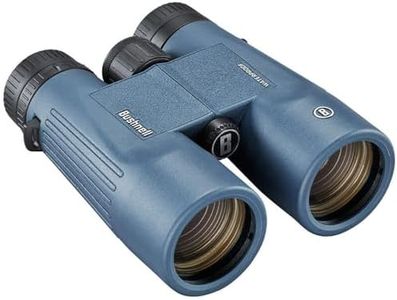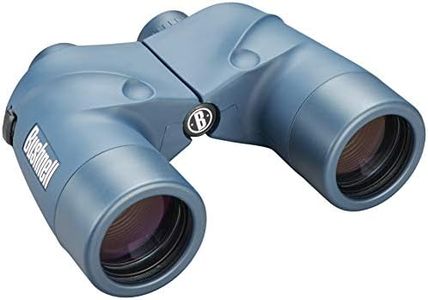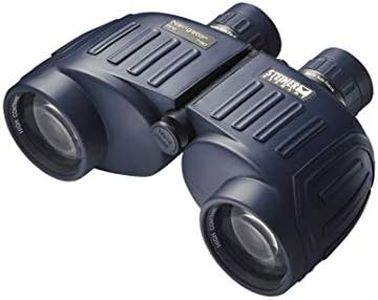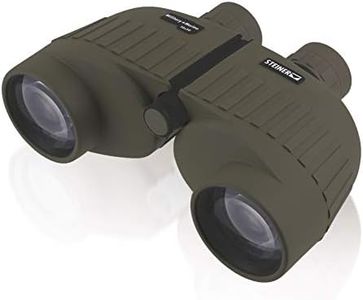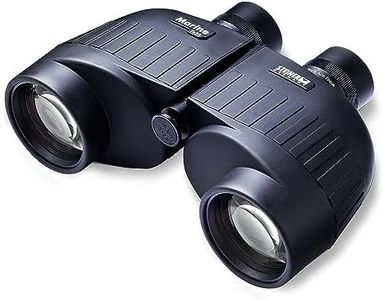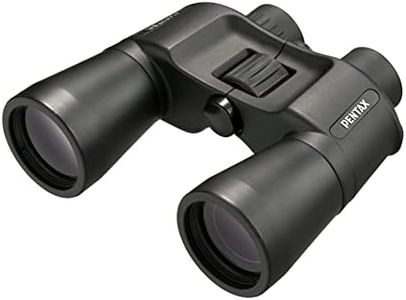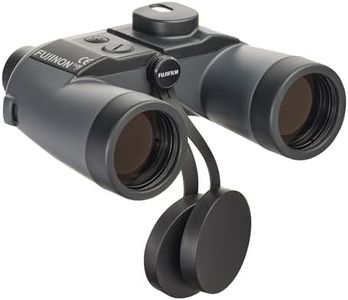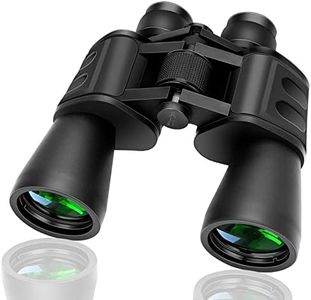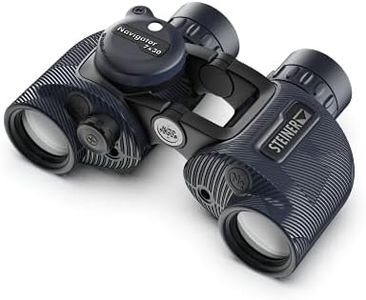We Use CookiesWe use cookies to enhance the security, performance,
functionality and for analytical and promotional activities. By continuing to browse this site you
are agreeing to our privacy policy
10 Best Marine Binoculars For Adults
From leading brands and best sellers available on the web.Buying Guide for the Best Marine Binoculars For Adults
Choosing the right marine binoculars for adults is all about ensuring great visibility, durability, and comfort when you're out on the water. Binoculars used in a marine environment face challenges like moisture, glare, salt exposure, and unsteady movement. It's important to select binoculars that not only offer a clear and stable image, but can also withstand harsh marine conditions. A well-chosen pair will make navigation, spotting objects or wildlife, and safety tasks much easier and more enjoyable during your time at sea.Magnification and Objective Lens DiameterThis spec is usually shown as two numbers (like 7x50), where the first number is magnification and the second is the diameter of the front lens in millimeters. Magnification determines how close objects appear, while the objective lens size affects how much light enters the binoculars. For marine use, too much magnification (over 7x) can make images shaky because of the constant movement on water, while lower magnification (7x) is steady and balanced for most users. Larger objective lenses (like 50mm) let in more light and create a brighter image, especially useful in low light or bad weather. Choose 7x50 if you're looking for a classic, stable, and bright marine binocular; smaller or larger sizes can be picked if you prioritize compactness or higher brightness, but always balance magnification with steadiness.
Waterproofing and Fog ResistanceSince marine binoculars are often exposed to splashes, rain, or even the accidental drop in water, waterproofing is a must-have. Fog resistance is equally important—binoculars filled with nitrogen or argon prevent internal fogging, so your view stays clear even with sudden temperature changes. Look for models rated as fully waterproof and fogproof. These features are essential for reliability and long life, especially if you’re regularly boating, sailing, or on the coast. If you often operate in wet or changing conditions, never skip these specs.
Field of ViewField of view refers to the width of area you can see through the binoculars, usually shown in feet at 1000 yards or meters at 1000 meters. A wider field of view makes it easier to scan the horizon, locate buoys, boats, or wildlife, and track moving targets while on a rocking boat. Higher magnification narrows the field of view, so stay within the 7x range for a balance of good field coverage and detail. Choose a wider field if you want to spot things quickly or follow fast-moving objects; a narrower field may be okay if you need to focus on stationary points in more detail.
Lens CoatingsLens coatings are layers on the glass surfaces that improve brightness, reduce glare, and enhance image clarity. Multi-coated lenses are ideal for marine use, as they maximize light transmission and minimize reflections from the water. There are usually three categories: coated, multi-coated, and fully multi-coated, with the last offering the best visibility and color fidelity. If you’re often boating in bright or sunny conditions, go for fully multi-coated lenses to ensure you get the clearest, most comfortable view.
Buoyancy and FloatabilitySome marine binoculars are designed to float if dropped in water, or come with floating straps. This is especially important in boating where accidental drops can happen. Not all binoculars float naturally; some require special floating straps. If you’re worried about dropping your binoculars in the water, look for this feature or plan to pair your binoculars with a floating accessory.
Build and GripThe build of marine binoculars should be rugged, with a rubber-armored coating for shock resistance and a secure grip even when wet or wearing gloves. The shape and surface design affect how easy it is to handle them in rough conditions. If your hands often get wet or you’re moving around on deck, prioritize models with textured rubber armor and ergonomic contours to make holding steady easier.
Compass and RangefinderSome marine binoculars include an integrated compass and a rangefinder reticle in the viewfinder. The compass helps with navigation and orientation, while the rangefinder assists with estimating distances. These features can be highly useful if you often use binoculars to navigate or need to know the direction and distance of objects. If your main concern is navigation, consider binoculars with these built-in aids. If you’re using binoculars just for sightseeing, these extras may not be necessary.
Eye ReliefEye relief refers to the comfortable distance your eye can be from the eyepiece and still see the full field of view. This is especially important for glasses wearers. Longer eye relief (15mm and above) means you can see clearly with glasses on, while shorter eye relief may require you to press your eye closer. If you wear glasses regularly, check for longer eye relief for a comfortable viewing experience.

